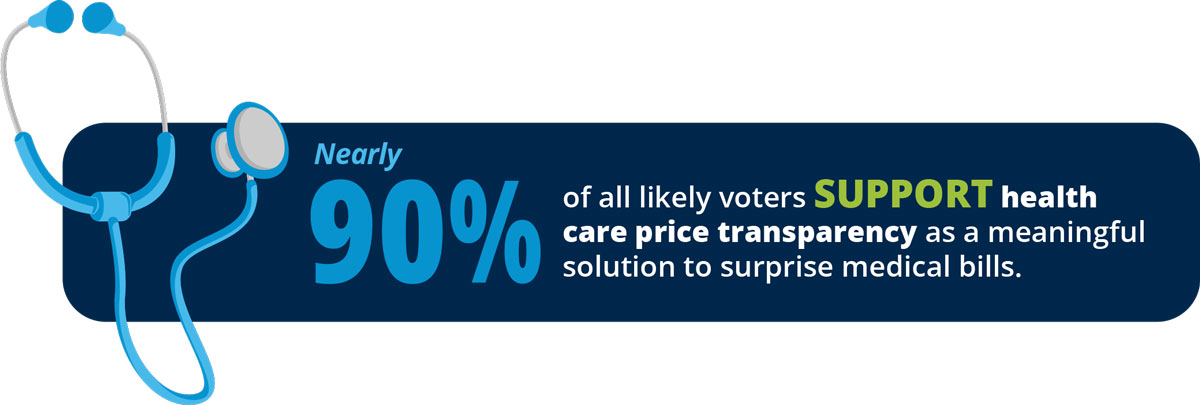Bringing Prices Into the Light
State Successes in Price Transparency
Hardworking American families will no longer tolerate secret prices in our health care system. Like all other goods and services in our economy, medical providers should bring their prices out into the light.
Thankfully, states everywhere are fighting for the transparency patients deserve.

Here are some states that show just what can happen when policymakers empower consumers with clear pricing information and foster transparency:
In New Hampshire, consumers who used price information to shop saved a great deal, with average savings of 36 percent for medical imaging services.
Maine requires all providers to offer patients the “prices of the health care entity’s most frequently provided health care services and procedures” and/or post them publicly.1 Plus, insurers must also maintain a public website in which patients can find cost estimates for services.2 Earlier this year, Maine also enacted a law which prohibits gag clauses between insurance carriers and all health care providers.3
In California, even those outside of the transparency program saw a 75 percent price reduction providing evidence that even just some price transparency is better than no price transparency.
Minnesota requires that both providers and insurers must disclose to patients and consumers a good faith estimate of allowable amounts under a health plan for a given service.4
Kentucky has a price transparency tool for public employees called the Vitals SmartShopper program. The program has saved state taxpayers $13.2 million and paid out nearly $2 million in shared savings to patients in the program’s first three years alone.
In Georgia, if a patient receives non-emergency medical services from out-of-network providers, the charge must be counted “toward the deductible and any maximum out of pocket policy provisions as if the services were obtained from a participating provider.” This is regardless of whether the service was lower cost than any in-network provider.5
In Ohio, providers must offer patients good faith estimates of what they and their insurer each will pay for a given health care service.
In Oklahoma, providers are required to provide prices for the 20 most used diagnosis-related group codes for health care services publicly, including: child delivery information, heart failure inquiries, and hip/knee replacements.

Texas requires insurers to provide cost estimates to enrollees for health care services and enforces the 2021 federal hospital price transparency rules by imposing state fines on non-compliant hospitals.
Florida requires some emergency rooms to post average facility fees in entrance and waiting areas.
Virginia, Colorado, Indiana, Arizona, and Arkansas ALL enforce federal hospital price transparency rules by imposing state fines on non-compliant hospitals.

Sources:
1. 22 M.R.S. § 1718-B
2. Me. Rev. Stat. tit. 24-A, § 4303(21)
3. 24-A MRSA §4303, sub-§25
4. Minn. Stat. § 62J.81
5. Ga. Comp. R. & Regs. r. 120-2-106-.06
